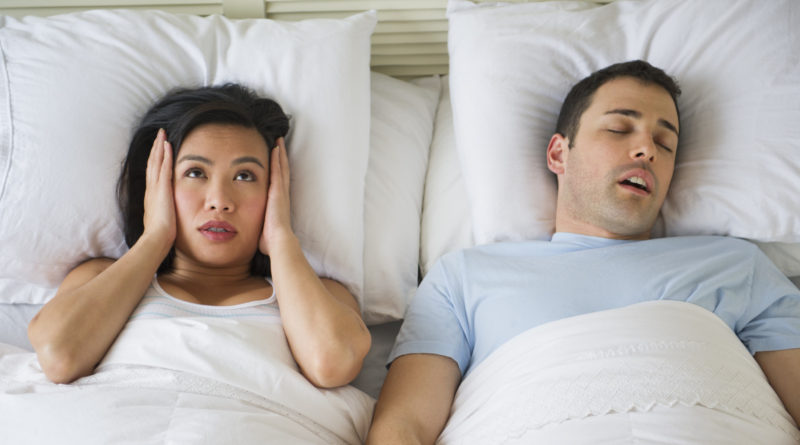Perilous Pauses
Sleep apnea in which your breathing pauses or becomes shallow disrupts your sleep and causes excessive daytime sleepiness. Even death could occur from untreated obstructive sleep apnea due to lack of oxygen to the body
By Dr Manisha Yadav
Do you wake up tired and not feeling fresh? Do you snore? Do you have high blood pressure? Do you have nocturia (passing urine during sleep)? If you have any of these symptoms, you may have Sleep Apnea.
Sleep Apnea is a common disorder in which you have one or more pauses in breathing or shallow breaths while you sleep. Breathing pauses can last from a few seconds to minutes. They may occur 30 times or more than an hour. Typically, normal breathing then starts again, sometimes with a loud snort or choking sound.
Sleep apnea is often diagnosed with an overnight sleep test called a polysomnogram, or sleep study. There are three forms of sleep apnea like Central Sleep Aprea (CSA), Obstructive Sleep Apnea (OSA), and complex or mixed sleep apnea. In CSA, breathing is interrupted by a lack of respiratory effort, in OSA, breathing is interrupted by a physical block to airflow despite respiratory effort, and snoring is common.
Sleep Apnea – A Serious Health Hazard
Regardless of type, an individual with sleep apnea is rarely aware of having difficulty in breathing, even upon awakening. Sleep apnea is recognised as a problem by others witnessing the individual during episodes or is suspected because of its effects on the body.
The most common type of sleep apnea is OSA. In this condition, the airway collapses or becomes blocked during sleep. This causes shallow breathing or breathing pauses. When you try to breathe, any air that squeezes past the blockage can cause loud snoring. OSA is more common in people who are overweight, but it can affect anyone. For example, small children who have enlarged tonsil tissues in their throats may have OSA.
OSA can increase the risk of high blood pressure, heart attack, heart failure, stroke, obesity,diabetes, or worsen the chances of having work-related stress or driving accidents. Sleep apnea is a chronic condition that requires long-term management. Lifestyle changes, surgery, and breathing devices can successfully treat sleep apnea in many people.
According to the National Institutes of Health, 12 million Americans have OSA. In metro cities like Delhi, Mumbai and other sub urban cities, the incidence of OSA is increasing. But people either do not report the condition or do not know that they have sleep apnea.
Sleep apnea usually is a chronic condition that disrupts your sleep. When your breathing pauses or becomes shallow, you’ll often move out of deep sleep and into light sleep. As a result, the quality of your sleep becomes poor, which makes you tired during the day. These days this is a leading cause of excessive daytime sleepiness.
Sleep apnea is classified as a dyssomnia, meaning behaviour or psychological events occur during sleep. When breathing is paused, carbon dioxide builds up in the bloodstream. The brain is signalled to wake up the person sleeping and breathe in air. Breathing normally will restore oxygen levels and the person will fall asleep again.
The OSA may increase risk for driving accidents and work-related accidents. If this is not treated, one has an increased risk of other health problems such as diabetes. Even death could occur from untreated obstructive sleep apnea due to lack of oxygen to the body. Moreover, patients are examined using “standard test batteries” in order to further identify parts of the brain that are affected by sleep apnea. Tests have shown that certain parts of the brain cause different effects. The executive functioning part of the brain affects the way the patient plans and initiates tasks. Second, the part of the brain that deals with attention causes difficulty in paying attention, working effectively and processing information when in a waking state. Thirdly, the part of the brain that uses memory and learning is also affected.
Due to the disruption in daytime cognitive state, behavioural effects are also present. This includes moodiness, belligerence, as well as a decrease in attentiveness and drive. Another symptom of sleep apnea is waking up in sleep paralysis. In severe cases, the fear of sleep due to sleep paralysis can lead to insomnia. These effects become very hard to deal with, thus the development of depression may transpire. There is also evidence that the risk of diabetes among those with moderate or severe sleep apnea is higher.
Symptoms may be present for years (or even decades) without identification, during which time the sufferer may become conditioned to the daytime sleepiness and fatigue associated with significant levels of sleep disturbance. Sleep apnea affects not only adults but some children as well. Patients complain about excessive daytime sleepiness and impaired alertness. In other words, common effects of sleep apnea include daytime fatigue, a slower reaction time, and vision problems.
There is also increasing evidence that sleep apnea may also lead to liver function impairment, particularly fatty liver diseases. Finally, because there are many factors that could lead to some of the effects previously listed, some patients are not aware that they suffer from sleep apnea and are either misdiagnosed, or just ignore the symptoms altogether.
Sleep Apnea– Treatment
Sleep apnea is a serious sleep disorder that needs to be treated. A board certified sleep physician can help you select a treatment plan that is right for you. It can be treated by different ways like CPAP (Continuous Positive Airway Pressure) Oral Appliance Therapy, Oral Appliance Therapy, Weight Management and Surgery. CPAP is a machine that uses a steady stream of air to gently keep your airway open throughout the night so you are able to breathe. You sleep with a mask with a hose that is attached to a machine kept at the bedside. Masks and machines may vary depending on your treatment and comfort needs.
CPAP is the frontline treatment for OSA and is recommended for all cases. An oral appliance is a device that fits in your mouth over your teeth while you sleep. It may resemble a sports mouth guard or an orthodontic retainer. The device prevents the airway from collapsing by holding the tongue in position or by sliding your jaw forward so that you can breathe when you are asleep.
Some patients prefer sleeping with an oral appliance to a CPAP machine. A dentist trained in dental sleep medicine can fit you with an oral appliance after you are diagnosed with sleep apnea. Oral appliance therapy is recommended for patients with mild to moderate apnea who cannot tolerate CPAP.
Surgical therapies are not as effective in treating sleep apnea as CPAP and oral appliances. There are a variety of surgical options you can elect to have if CPAP or oral appliance therapy does not work for you. The most common options reduce or eliminate the extra tissue in your throat that collapses and blocks your airway during sleep. More complex procedures can adjust your bone structures including the jaw, nose and facial bones. Weight loss surgery may also be an option. Talk to your sleep medicine physician about which surgery is right for you.
In some cases weight loss can help improve or eliminate your sleep apnea symptoms if you are overweight or obese. Overweight people often have thick necks with extra tissue in the throat that may block the airway. There is no guarantee that losing weight will eliminate your sleep apnea, though it may help. This approach is unlikely to make a difference in patients with a narrow nasal passage or airway.
Positional therapy is a behavioural strategy to treat positional sleep apnea. Some people have sleep apnea primarily when sleeping on their back. This is called the “supine” position. Their breathing returns to normal when they sleep on their side. Positional therapy may involve wearing a special device around your waist or back. It keeps you sleeping in the side position. Another option is a small device that uses “vibro-tactile feedback” technology. Worn on the back of the neck, it gently vibrates when you start to sleep on your back. Without waking you up, the vibration alerts your body to change positions. Positional therapy can be used alone or together with another sleep apnea treatment.
There are a variety of lifestyle changes that you can make to help you reduce your snoring and improve your sleep apnea symptoms. Behavioural changes such as quitting smoking or not drinking alcohol may help in this regard. Alcohol relaxes your throat muscles which can cause you to snore or for your airway to collapse. If you have allergies, taking a decongestant before you go to bed may help improve airflow through your nose.
(The author is a Medical Practitioner)



